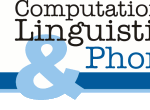Schedule
The course is split into two parts. In the first five weeks, we will teach you the fundamentals that you need to know to start developing GIVE systems. In particular, the schedule for the first few weeks looks as follows:
| 15 Oct | AK | Introduction to NLG |
| 22 Oct | AK | GIVE |
| 29 Oct | AK | How to implement a GIVE NLG system; tool support |
| 5 Nov | Andrew Gargett | situated communication; details tba |
| 12 Nov | Konstantina Garoufi | situated communication; details tba |
As these dates approach, I will add links to some literature about each of these topics. It would be good both for you and for me if you could look at some of the literature before each class, particularly because this will enable you to ask tougher questions in class. You should be aware that these initial lectures are not only meant to transmit information to you; they are also intended to get you to think about interesting issues, shortcomings, or things you want to try out in the current NLG literature, and thus set you on a path towards designing your own GIVE NLG system. This will work better if you are well prepared. So it really would be a good idea to prepare well.
In the second part, you will design and implement your own GIVE NLG system. We will kick this part of the course off with a meeting on Nov 19 in which one student from each team will present the team's plans. Then we will meet each week to discuss each other's progress and try to help each other with problems. The semester concludes with a presentation of the finished systems on February 4. This connects up nicely with the public GIVE-2 evaluation, which starts in February.
This structure of the course parallels that of the classes we taught on Talking Lego Robots in 2002 and 2004. It worked really well in those classes, and I hope it will work similarly well here.

